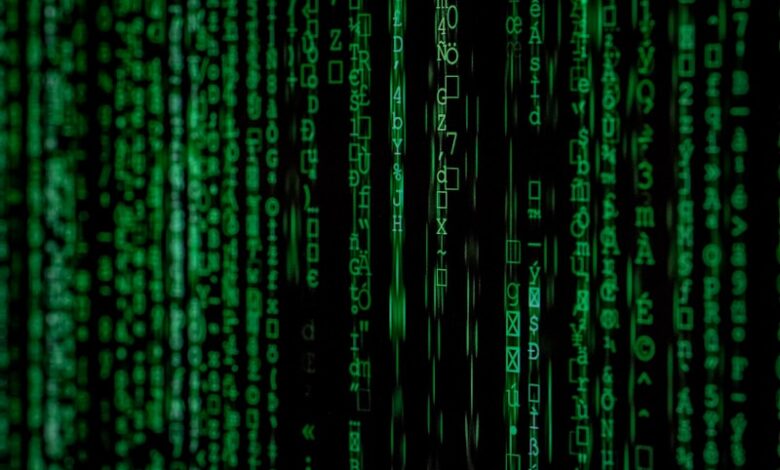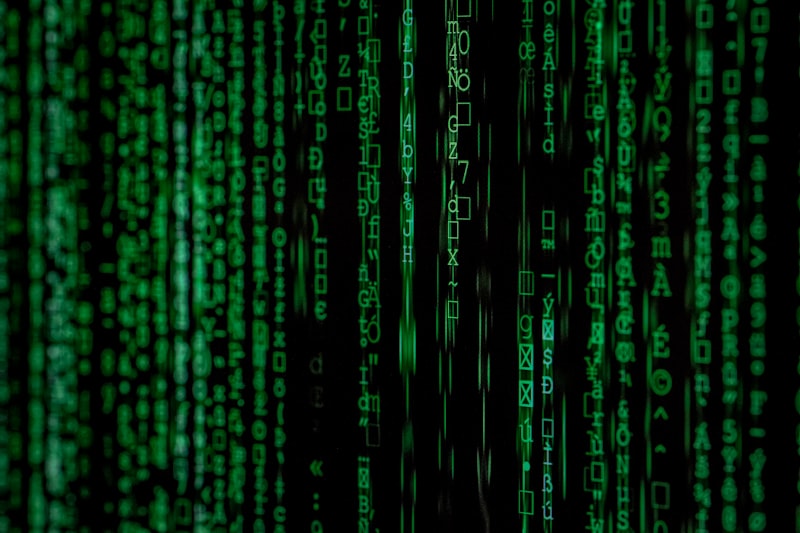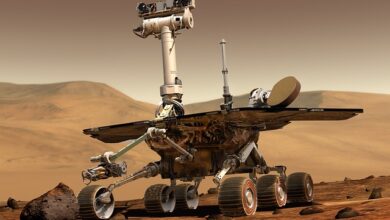Machine Vision and Image Processing Technologies


Have you ever wondered how machines can “see” and understand the world around them? It’s a fascinating realm where technology converges with human-like perception, bringing us into the realm of machine vision and image processing technologies. In this article, we’ll delve into the intricacies of these cutting-edge advancements that are revolutionizing industries across the globe.
Machine vision enables computers to process, analyze, and make sense of visual information, just as our own eyes and brains do. By employing sophisticated algorithms and powerful hardware, machines can extract features, recognize patterns, and interpret images captured by cameras or sensors. This technology finds applications in various fields such as manufacturing, healthcare, robotics, and autonomous vehicles, among others.

At the heart of machine vision lies image processing, a crucial component that enhances the quality and extract relevant details from images. Through techniques like filtering, segmentation, and feature extraction, image processing algorithms unravel hidden insights and enable accurate decision-making. For instance, in medical imaging, image processing aids in detecting anomalies, assisting doctors in diagnosing diseases at an early stage.
One noteworthy aspect of machine vision is its ability to go beyond human limitations. Machines can tirelessly analyze vast amounts of data at incredible speeds, surpassing human visual processing capabilities. This opens up new possibilities for tasks like quality control in manufacturing, where machines can detect defects with greater precision than the human eye.
As technology advances, machine vision and image processing are becoming increasingly intelligent. With the integration of artificial intelligence and deep learning techniques, machines can now learn from large datasets, improving their accuracy and adaptability over time. This paves the way for advancements like facial recognition, object detection, and even autonomous navigation systems.
Machine vision and image processing technologies have emerged as game-changers, empowering industries and transforming the way we perceive the world. Their potential knows no bounds, from revolutionizing healthcare diagnostics to enabling self-driving cars. As we continue to explore the possibilities of these groundbreaking technologies, one thing is certain: the future of visual perception has never been brighter.
Revolutionizing Industries: How Machine Vision and Image Processing Technologies Are Reshaping the Future
Have you ever wondered how technology is transforming various industries, shaping a future that seemed unimaginable just a few years ago? One such technological breakthrough that is causing a revolution across multiple sectors is the integration of machine vision and image processing technologies. These cutting-edge advancements are paving the way for exciting possibilities and fueling innovation like never before.
Machine vision refers to the ability of computers to process and interpret visual information, enabling them to “see” and understand images or videos just like humans do. By harnessing the power of artificial intelligence (AI) and deep learning algorithms, machines can now analyze visual data with incredible accuracy and speed.
Industries such as manufacturing, healthcare, automotive, robotics, and agriculture are experiencing a significant transformation due to machine vision and image processing technologies. In manufacturing, for instance, these technologies are streamlining production processes by automating quality control inspections. Defective products can be easily identified and removed, ensuring only the highest-quality items reach the market.
In healthcare, machine vision systems are enhancing medical imaging techniques and diagnostics. Radiologists can now rely on advanced algorithms to detect anomalies in X-rays, CT scans, and MRIs more efficiently, leading to faster and more accurate diagnoses. This not only saves time but also improves patient outcomes.
The automotive industry is also benefiting from these advancements. Machine vision enables self-driving cars to perceive their surroundings, recognize traffic signs, and navigate complex road conditions. As a result, we are closer than ever to achieving widespread adoption of autonomous vehicles, which promises safer and more efficient transportation systems.

Even agriculture is being reshaped by machine vision and image processing. Farmers can use drones equipped with cameras to monitor crop health and identify areas that require attention. This allows for targeted interventions, optimizing resource utilization and maximizing yields.
Machine vision and image processing technologies are revolutionizing industries by enabling computers to “see” and comprehend visual information. From manufacturing to healthcare, automotive to agriculture, these advancements are transforming processes, improving efficiency, and opening up new possibilities for innovation. As we embrace these technologies, we can look forward to a future where machines work alongside humans, augmenting our capabilities and reshaping the world as we know it.
A Closer Look: Unveiling the Power of Machine Vision and Image Processing in Advanced Surveillance Systems
Have you ever wondered how surveillance systems are able to detect, analyze, and respond to various situations with remarkable accuracy and speed? The answer lies in the impressive capabilities of machine vision and image processing technologies. These cutting-edge advancements have revolutionized the field of surveillance, enabling us to enhance security measures and ensure public safety like never before.
Machine vision, often referred to as computer vision, is a technology that allows machines to gain a visual understanding of the world around them. By mimicking human vision, machines equipped with this technology can perceive and interpret images or video streams, extracting valuable information from them. This enables surveillance systems to identify objects, recognize patterns, and even understand complex scenes.
One of the key components of machine vision is image processing. This involves manipulating and analyzing digital images to extract meaningful insights. Through techniques such as edge detection, pattern recognition, and object tracking, image processing algorithms can identify suspicious activities, track individuals, and detect anomalies in real-time. This level of sophistication empowers surveillance systems to proactively respond to potential threats, preventing incidents before they unfold.
Imagine a surveillance system that can autonomously detect unauthorized access to restricted areas. With machine vision and image processing, it becomes a reality. These technologies enable surveillance cameras to accurately recognize faces, license plates, and even specific objects within a scene. By comparing captured data against databases of known individuals or objects, security personnel can swiftly respond to potential security breaches, ensuring heightened levels of safety.
Moreover, machine vision and image processing algorithms can be trained to adapt and learn from new experiences. This means that over time, surveillance systems become more intelligent and efficient at detecting abnormal behaviors or identifying emerging risks. As a result, security measures can evolve dynamically, keeping up with the ever-changing security landscape.

Machine vision and image processing play a pivotal role in advanced surveillance systems. By harnessing the power of these technologies, we can achieve unprecedented levels of accuracy, efficiency, and effectiveness in ensuring public safety. As surveillance continues to evolve, it is fascinating to witness how machine vision and image processing enable us to see beyond what meets the eye, empowering us to create a safer world for everyone.
Visualizing Success: How Machine Vision and Image Processing Technologies Boost Quality Control in Manufacturing
Have you ever wondered how manufacturers ensure the highest quality standards for their products? The answer lies in the remarkable combination of machine vision and image processing technologies. These powerful tools are revolutionizing the field of quality control, allowing manufacturers to achieve unprecedented levels of accuracy and efficiency.
Machine vision, also known as computer vision, is a technology that enables machines to “see” and interpret visual information, much like humans do. By employing advanced algorithms and sophisticated cameras, machine vision systems can capture and analyze images or videos of products during various stages of production. This allows for real-time monitoring and inspection, ensuring that any defects or deviations from desired specifications are immediately detected.
Image processing, on the other hand, involves manipulating visual data to enhance its quality, extract valuable information, or perform specific tasks. In the context of quality control, image processing techniques are utilized to identify flaws, measure dimensions, check for proper labeling, and verify product integrity. These processes often involve the use of complex algorithms to analyze pixel values, shapes, patterns, and textures within the images.
By integrating machine vision and image processing technologies into their manufacturing processes, companies can gain numerous benefits. First and foremost, these technologies significantly improve the accuracy and reliability of quality control inspections. Unlike human inspectors who may be prone to errors and fatigue, machine vision systems can tirelessly examine every product with extreme precision, leaving no room for oversight.
Furthermore, the speed at which machine vision systems operate is unparalleled. They can process thousands of images per second, allowing for high-speed inspections without compromising accuracy. This not only enhances productivity but also enables rapid detection of defects, leading to timely interventions and reduced waste.
Another advantage of machine vision and image processing technologies is their ability to provide objective and consistent assessments. Human perception can be influenced by various factors such as mood, fatigue, or personal biases. In contrast, machine vision systems adhere strictly to predefined algorithms, ensuring consistent evaluations and eliminating subjective judgments.
The fusion of machine vision and image processing technologies has revolutionized quality control in manufacturing. These remarkable tools offer unparalleled accuracy, speed, and consistency, enabling manufacturers to produce flawless products while optimizing productivity. As the manufacturing industry continues to evolve, embracing these cutting-edge technologies will be crucial for companies seeking to visualize success and maintain a competitive edge in the market.
From Pixels to Insights: Exploring the Cutting-Edge Applications of Machine Vision and Image Processing
Welcome to the world where machines see and interpret the visual world just like humans do. In this article, we will dive into the fascinating realm of machine vision and image processing, where pixels transform into valuable insights, revolutionizing various industries.
Imagine a scenario where computers can detect objects, recognize faces, and analyze images with incredible precision. Machine vision, powered by sophisticated algorithms and advanced hardware, empowers machines to process and understand visual information in real-time. By emulating the human visual system, it enables computers to extract meaningful data from images or video streams, opening up a world of possibilities.

One of the most prominent applications of machine vision is in autonomous vehicles. Through a combination of cameras, sensors, and deep learning models, self-driving cars can perceive their surroundings, identify pedestrians, read road signs, and make split-second decisions to ensure passenger safety. This technology has the potential to reshape transportation, making our roads safer and more efficient.
In the manufacturing sector, machine vision plays a pivotal role in quality control processes. By analyzing product images at high speeds, it can identify defects, measure dimensions, and ensure consistency throughout production lines. This not only saves time and resources but also improves overall product quality, leading to higher customer satisfaction.
Medical imaging is another domain where machine vision showcases its transformative potential. From diagnosing diseases to aiding surgical procedures, this technology assists healthcare professionals in providing accurate and efficient care. By analyzing medical scans, such as X-rays and MRIs, machine vision algorithms can help detect abnormalities, track disease progression, and even predict treatment outcomes.
Beyond these applications, machine vision and image processing find utility in agriculture, security systems, retail analytics, and much more. Whether it’s monitoring crop health, enhancing surveillance capabilities, or optimizing store layouts, these cutting-edge technologies are reshaping industries across the board.
Machine vision and image processing have emerged as game-changers in today’s tech-driven world. By harnessing the power of pixels and transforming them into valuable insights, these technologies are bringing us closer to a future where machines perceive and interpret visual information like humans. The impact of this revolution is far-reaching, with applications ranging from autonomous vehicles to healthcare and beyond. As we continue to push the boundaries of what’s possible, the possibilities for leveraging machine vision and image processing are truly awe-inspiring.




